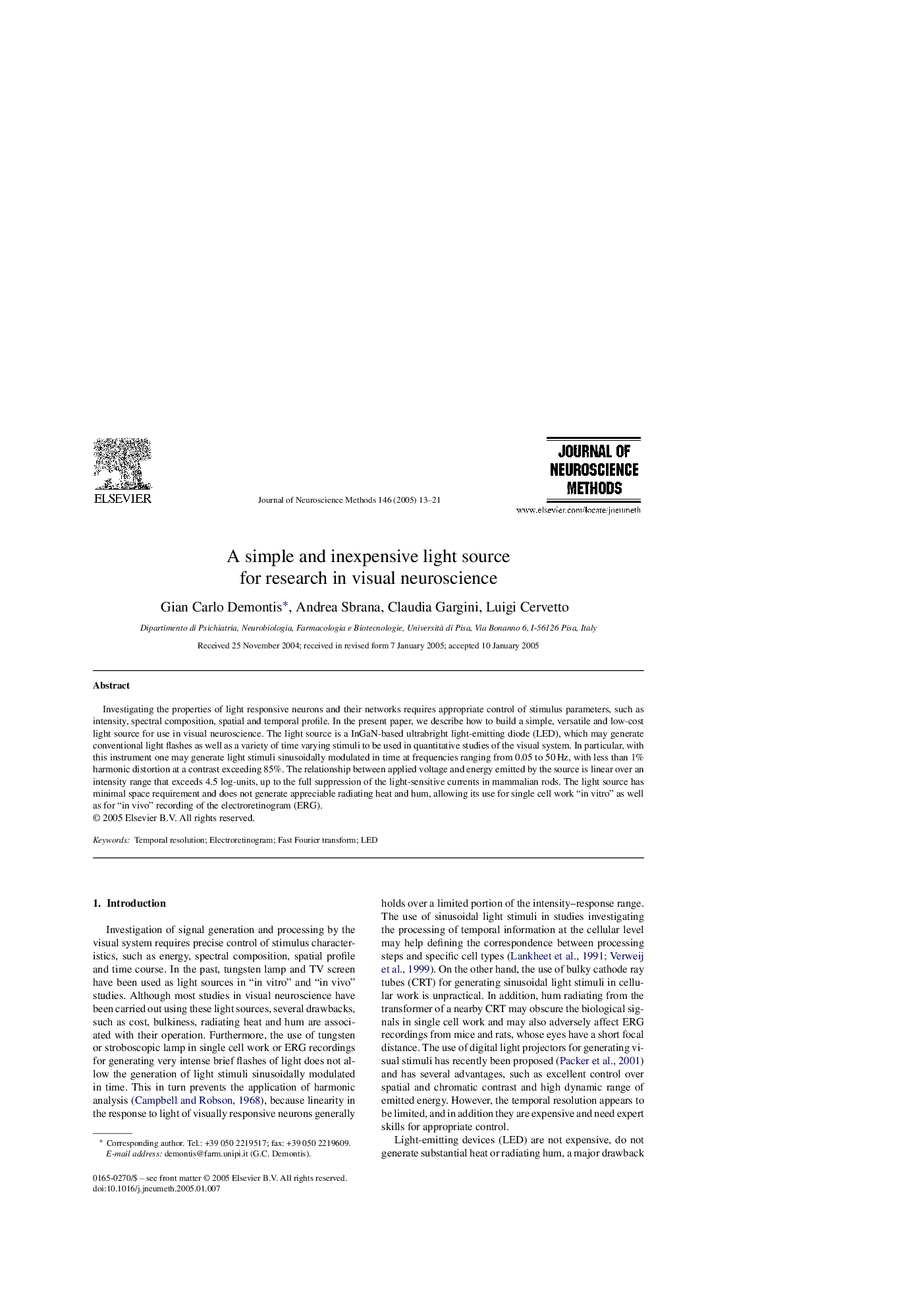| Article ID | Journal | Published Year | Pages | File Type |
|---|---|---|---|---|
| 9424270 | Journal of Neuroscience Methods | 2005 | 9 Pages |
Abstract
Investigating the properties of light responsive neurons and their networks requires appropriate control of stimulus parameters, such as intensity, spectral composition, spatial and temporal profile. In the present paper, we describe how to build a simple, versatile and low-cost light source for use in visual neuroscience. The light source is a InGaN-based ultrabright light-emitting diode (LED), which may generate conventional light flashes as well as a variety of time varying stimuli to be used in quantitative studies of the visual system. In particular, with this instrument one may generate light stimuli sinusoidally modulated in time at frequencies ranging from 0.05 to 50Â Hz, with less than 1% harmonic distortion at a contrast exceeding 85%. The relationship between applied voltage and energy emitted by the source is linear over an intensity range that exceeds 4.5 log-units, up to the full suppression of the light-sensitive currents in mammalian rods. The light source has minimal space requirement and does not generate appreciable radiating heat and hum, allowing its use for single cell work “in vitro” as well as for “in vivo” recording of the electroretinogram (ERG).
Related Topics
Life Sciences
Neuroscience
Neuroscience (General)
Authors
Gian Carlo Demontis, Andrea Sbrana, Claudia Gargini, Luigi Cervetto,
